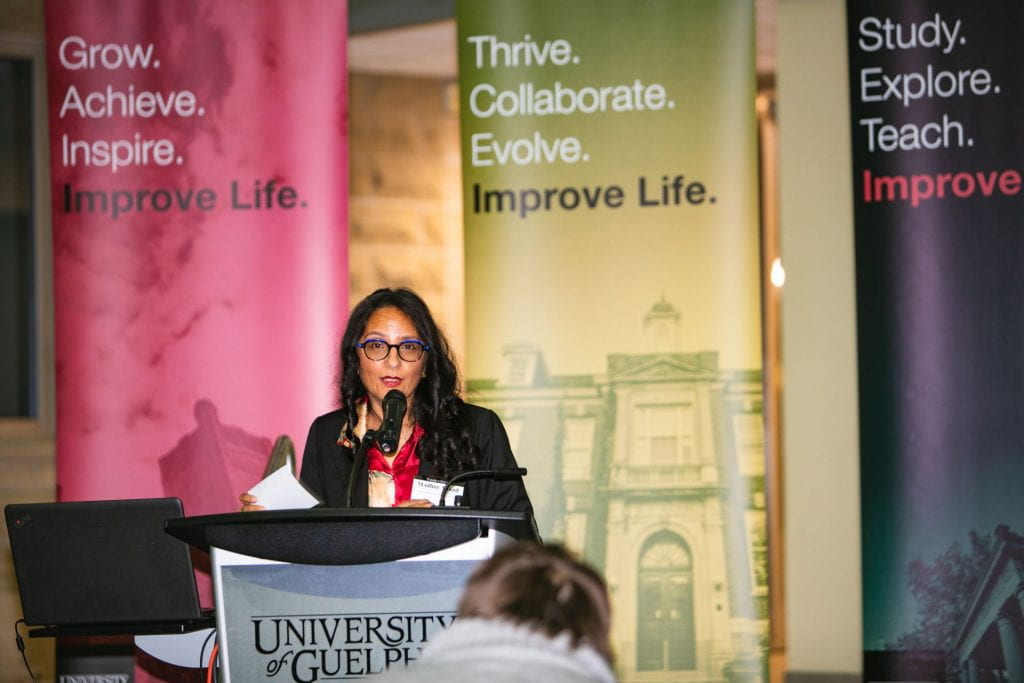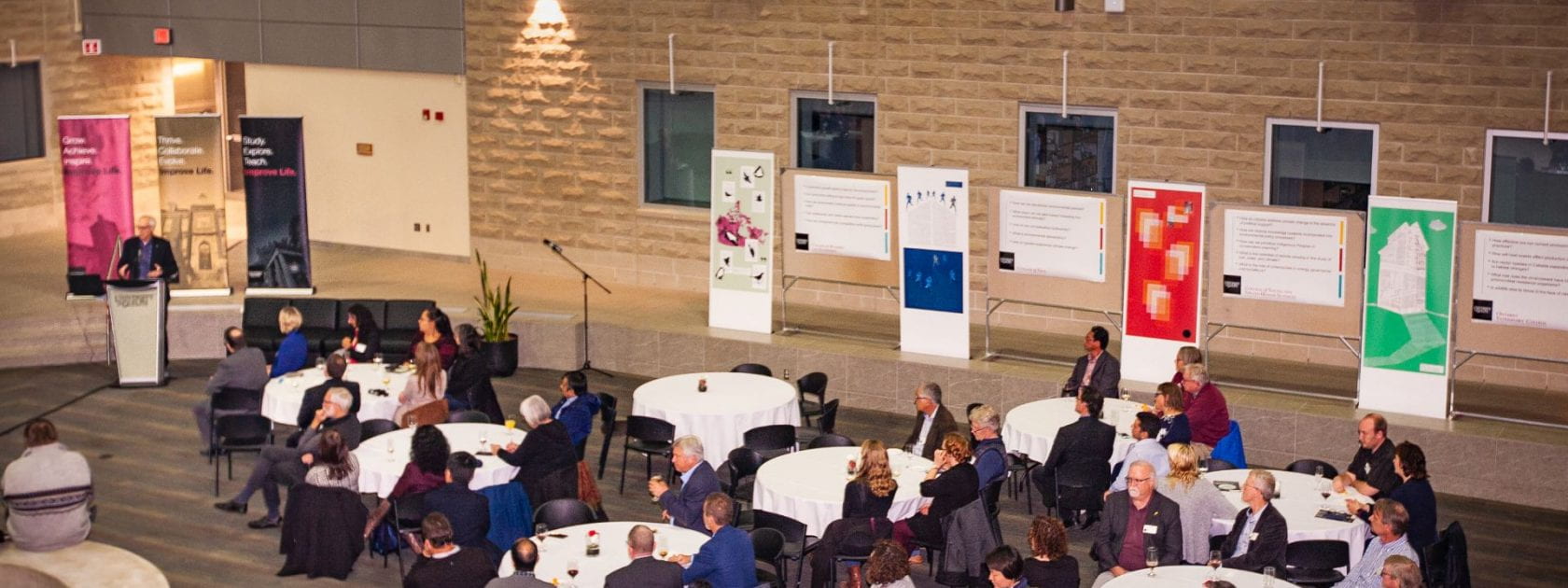October 25, 2019
In 2015, the international community of the United Nations Environment Program put forward 17 broad sustainable development goals to improve the environment. Please take a moment to listen and reflect, while I list them for you:
No poverty. Zero hunger. Good health and well-being. Quality Education. Gender Equity. Clean Water and Sanitation. Affordable and Clean Energy. Decent Work and Economic Growth. Industry, Innovation, and Infrastructure. Reduced Inequalities. Sustainable Cities and Communities. Sustainable Consumption and Production. Climate Action. Life below Water. Life on Land. Peace, Justice and Strong Institutions.
What is clear from these several goals is that “Environment” includes multiple planetary boundaries and diverse social dimensions. And just around you, here at the University of Guelph, we have an incredible base of environmental researchers working across all of these areas: mathematicians, computer scientists, physicists, historians, chemists, economists, ecologists, sociologists, poets, and so much more.
The thing is, many of these goals are interlinked. Every major international report issued in the past year, whether by the IPCC, IPBES, or the EAT Lancet Forum calls for wildly interdisciplinary approaches to solving our environmental crises. And the other thing is, there are often synergies among the goals. That for example: improving Life on Land can lead to cleaner water and sanitation. That increasing gender equity, can lead to greater climate action. It’s those synergies that make putting the parts together so exciting. The whole being greater than sum of its parts. Finally, we need creative approaches. New lenses. Art looking at science. Science looking at art. But how do you achieve all that?
Now, if you were listening carefully, you will have noticed that I read out only 16 goals, yet I told you there were 17. The 17th goal is actually a meta-goal: It’s called “Partnerships for the Goals”; it’s a goal for how to achieve all the goals. And that is how I envision GIER. We need to put into practice processes that lead to mobilizing resources, sharing knowledge between each other, thinking holistically, and, ultimately, promoting growing cooperation among multilateral organizations, donors and the private sector.
Many of us would agree that there is strength in diversity, but anyone who does interdisciplinary work knows it has its challenges. A paper published in the journal Nature Sustainability last year found that “most organizations are poorly configured to deliver the transformations needed to shift to more collaborative interdisciplinary structures.” We have to understand each others’ goals, and ultimately share them. We have to learn how to understand each other’s disciplinary languages, to develop shared values.
We have to feel comfortable stepping out of our departments, our colleges, and our existing networks and structures. My vision is that GIER will provide the opportunities to do just that. And in that process, all the outstanding environmental research occurring at Guelph, both current and potential, will have an even greater impact. That we will be able to solve environmental problems at a new level of thinking, far beyond where we were when we created them.
In brief, I’m incredibly excited to be helping GIER get off the ground and look forward to seeing the ideas that are generated by this ambitious institute in the months and years to come. Please do stay tuned for an announcement of our first seed grant competition coming very soon. To get some thoughts flowing, we asked each member of the governance committee, to bring us five questions, five environmental problems that their college was trying to solve right now, which you will see is part of the exhibit here to my left. They are by no means exhaustive, but I must say it was interesting to see that some of the questions were similar across colleges. I invite you spend a little more time meeting with your environment colleagues from different colleges and then, if you like, providing us with your preliminary thoughts on some cross-cutting themes for GIER.
Finally, thank you to everyone who has worked hard to bring GIER into existence at this university (to the current and past members of the governance and steering committees, to interim CBS Dean Glen Van der Kraak and past CBS Dean Jonathan Newman, and to the Provost, Dr. Charlotte Yates). Thanks to all of you for helping to launch GIER today.
Dr. Madhur Anand, Inaugural Director of GIER




